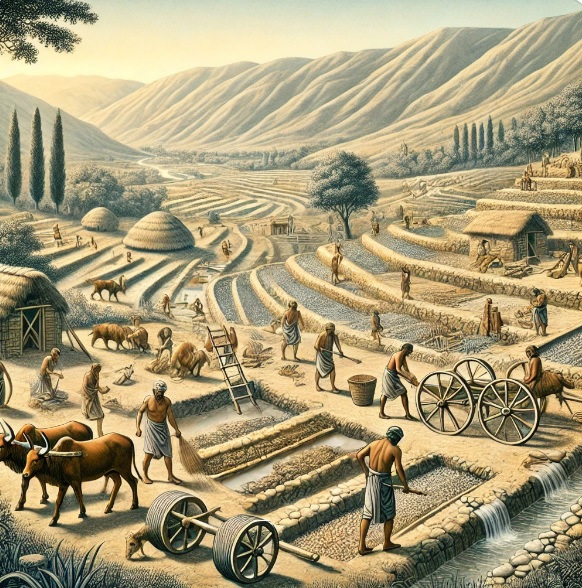Jul 11 2024
The Neolithic Revolution
 What was the greatest invention of human civilization? Arguably it was agriculture, which allowed for civilization itself. Prior to agriculture humans were some combination of hunters, gatherers, scavengers, and fishers. We lived off the land, which was a full-time job. Many communities had to be nomadic, to follow prey and follow the seasons. There were some permanently occupied sites, if they were in proximity to an adequate food source. Food was the ultimate limiting factor on human populations and ingenuity.
What was the greatest invention of human civilization? Arguably it was agriculture, which allowed for civilization itself. Prior to agriculture humans were some combination of hunters, gatherers, scavengers, and fishers. We lived off the land, which was a full-time job. Many communities had to be nomadic, to follow prey and follow the seasons. There were some permanently occupied sites, if they were in proximity to an adequate food source. Food was the ultimate limiting factor on human populations and ingenuity.
Agriculture was therefore a transformative invention, allowing people to stay in one place and develop infrastructure. It also freed up some members of the group to do things other than focus on acquiring food. It made civilization possible. How far back does agriculture go?
The consensus is that agriculture began in earnest about 12,000 years ago, in the fertile crescent that is now Iran, Iraq, Turkey and surrounding regions. Evidence for this includes the remnants of domesticated plants, and also evidence of farming and food processing. In addition there is evidence of domesticated animals, which would have been a source of labor and also an additional food source. There were also some downsides to this shift in lifestyle – relying on a narrow range of plants reduced food diversity and therefore overall nutritional quality. Living with domesticated animals, and in larger populations, also saw the rise of communicable diseases. The latter still plagues humanity. However, successful societies all figured out eventually how to farm a combination of plants that would provide adequate nutrition. You may have noticed that most cultures’ staple foods include some combination of a grain plus a legume – corn and beans, rice and lentils, for example.
It turns out, however, that agriculture likely had far deeper roots. A 2015 study details evidence for farming 23,000 years ago, on the shores of the Sea of Galilee. One of the lines of evidence was the presence of extensive weeds. This may seem counter-intuitive, but weeds thrive in cultivated and disturbed land, and so an unusual concentration of weeds is a marker for farming. There was also the presence of wild oats, wild barley, and wild emmer, in addition to tools for processing these grains and evidence of such processing. Was this a false start that eventually died off and had to be rediscovered, or was sporadic farming part of human behavior in this region for thousands of years before systematic agriculture?
It does make sense that kickstarting agriculture would be difficult. There is a bit of chicken and egg problem – you need a stable community to farm, but you need farming to have a stable community. Perhaps some communities did a little farming on the side.
A second major hurdle – what are you going to plant? I have often engaged in the thought experiment of what it would be like to try to kickstart civilization if you were suddenly transported to a prehistoric society 20 thousand or so years ago. Prior to agriculture there were no domesticated or cultivated plants. What exists in the wild is all barely edible – except for fruits, which evolved to be eaten as a bribe for seed distribution. But even the wild version of most fruits would be considered horrible by modern standards. Only a handful of plants that humans regularly consume are close to their wild forms – such as raspberries. Most others would be unrecognizable to modern eyes.
It is incredible to think, therefore, of our ancestors planting these barely edible plants as a supplement to their diet. It would have been a lot of work for little return, although when living on the edge of starvation anything increases the chances of survival. And then, literally over thousands of years, picking and replanting seeds from incrementally better varieties slowly transformed these wild plants into modern crops. Seeds therefore became a vital commodity, and were traded far and wide. There is an unbroken connection from those first farmers at least 12,000 years ago, if not longer, to modern farming.
Up until very recently, however, farming was still a labor intensive way to get a steady supply of food. During colonial times, for example, 95% of the population was engaged in farming. That left the other 5% to essentially do everything else. But farming also allowed for huge population growth, so while 5% is a small fraction it is a massive population in absolute numbers – a population of scholars, engineers, inventors, artists, and politicians.
Today only about 2% of the population is engaged in farming, which is able to sustain a population of 8 billion people. That is the revolution of agriculture.






